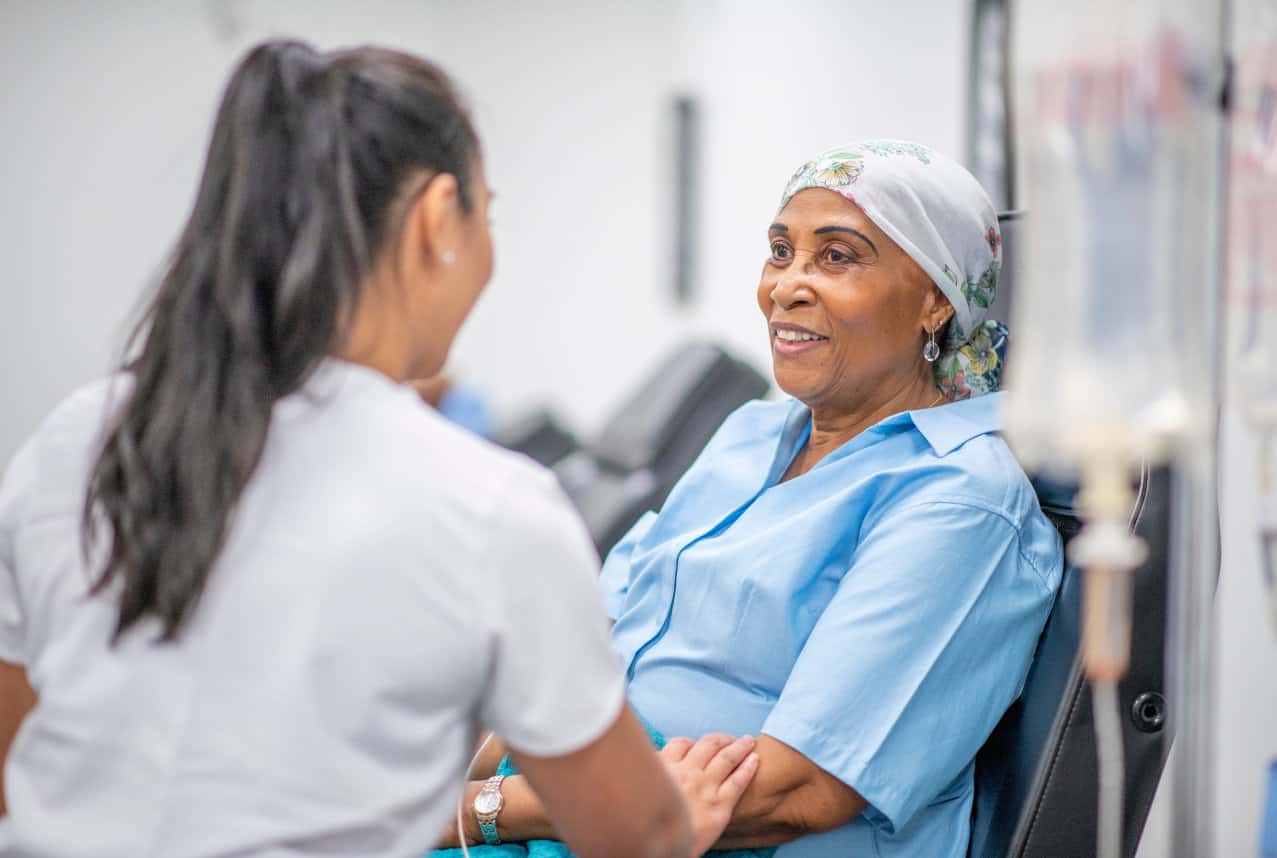Sarcoma and Bone Cancer Awareness Month – Learn to Make a Difference
Utilization Management Insights
By Kathryn Kolonic, , DO, MPH, CPHQ
AllMed Vice President & Medical Director
At any one time, more than 50,000 patients and their families in the United States are struggling with sarcoma, one of the deadliest types of rare cancers.1 Sarcoma develops in the connective tissues and may spread to other parts of the body. Roughly 50-55 percent of the time, sarcoma can be cured by surgery or by surgery with chemotherapy or radiation, but approximately half of sarcomas are currently incurable.2 Despite a clear need for new therapeutic approaches, sarcoma research doesn’t get as much attention or funding as many other cancer research efforts because the disease is relatively rare.
July is Sarcoma and Bone Cancer Awareness Month, a chance to highlight recent discoveries in the field and raise awareness of the importance of early diagnosis. Let’s make the most of this opportunity to learn more and help improve outcomes and quality of life for people affected by sarcoma.
Sarcoma in the U.S. — Facts and Figures
There are more than 70 subtypes of sarcoma, but together they represent less than one percent of all cancers diagnosed in the U.S. annually.3 Though relatively rare, these cancers lead to death in approximately 35 percent of patients diagnosed with them.4 Roughly 80 percent of all sarcomas are soft tissue sarcomas, and the remaining 20 percent are bone cancers.5 According to data from the National Cancer Institute’s Surveillance, Epidemiology, and End Results Program (SEER), approximately 13,400 cases of soft tissue sarcoma and 3,970 cases of bone and joint cancer are expected to be diagnosed in the U.S. in 2023.6
Generally, soft tissue cancers are more often diagnosed in those 55 and older, while bone and joint cancers affect teenagers more frequently. More commonly diagnosed subtypes include osteosarcomas, which develop in bone and are usually found in children, and soft tissue sarcomas such as liposarcomas, which form in fat, and rhabdomyosarcomas, which form in muscle.
Bone Cancer — Distinguishing Non-soft Tissue Sarcoma Types
Primary bone cancers are cancers that start in the bone cells rather than in the plasma cells or blood-forming cells in the bone marrow. Also known as bone sarcomas, these cancers can form tumors in any bone but most commonly affect the pelvis or the long bones of the arms or legs. The causes of most bone sarcomas are not known, though a few have been linked to hereditary factors, and some are related to previous radiation exposure.7
The most commonly diagnosed type of bone cancer is osteosarcoma, which tends to occur in teenagers and young adults and most often originates in the legs and arms. Chondrosarcoma occurs most often in the cartilage of the pelvis, hip, and shoulder, and Ewing sarcoma is most often found in the leg bones and pelvis and is more common in children.
Symptoms of bone sarcoma vary depending on the type, location, and extent of the cancer. They may include pain that becomes more constant over time, a lump or swelling at the tumor site, and/or fractures. Because sarcomas have a diverse range of features at the molecular and cellular level, not all bone sarcomas respond to the same types of treatment. Surgical removal is the most common treatment. Depending on the type of bone cancer, chemotherapy or radiation may also be used.
Soft Tissue Cancers — Challenging to Diagnose
Soft tissue sarcomas can develop in muscles, fat, tendons, nerves, veins, arteries, or even within organs. Most often, soft tissue sarcoma occurs in the arms or legs (60 percent) or torso or abdomen (30 percent), but it can occur anywhere in the body.8 Certain types are more likely to affect children while others affect mostly adults.
Soft tissue sarcomas can be hard to diagnose. They can be symptomless in the early stages, and many of the symptoms experienced as the cancer grows can be caused by something more common than sarcoma. While symptoms may include the development of a noticeable lump or swelling, if the growth is in the abdomen, the patient may instead experience vomiting or constipation. Sarcomas that begin in the lungs or heart may cause chest pain or breathing problems. Diagnosis is confirmed via a biopsy which, ideally, should be checked by a pathologist with experience in diagnosing different types of soft tissue sarcoma.
It’s not clear what causes soft tissue sarcoma, but researchers have identified a number of risk factors. These include certain inherited disorders such as Li-Fraumeni syndrome and Gardner syndrome, past treatment with radiation therapy, and exposure to certain chemicals such as vinyl chloride or arsenic. Being infected with HIV or human herpesvirus can increase one’s risk of developing Kaposi sarcoma, specifically.9
Treatment and prognosis depend on a variety of factors including the type of soft tissue sarcoma, the size, grade, stage, and location of the tumor, and the patient’s age and general health.10 As with bone sarcoma, for early-stage, low-grade tumors, surgery may be the only treatment required. For more advanced sarcomas, additional therapies such as chemotherapy, radiation, targeted therapy, immunotherapy, or ablation therapy may be needed. Researchers are studying these and other novel treatments as they work to uncover new strategies to improve outcomes for people affected by sarcomas.
Sharing Knowledge to Improve Care
Sarcoma and Bone Cancer Awareness Month is a call to deepen and share our knowledge of this rare form of cancer. Join us at AllMed as we learn and work toward improving care for members with sarcoma.
- Sarcoma Foundation of America. 2022 estimates for sarcomas in the United States. 2022. https://www.curesarcoma.org/wp-content/uploads/Sarcoma-Statistics-2022.pdf. Accessed June 28, 2023.
- Ibid.
- Pancholi, Neha. Hard-hitting Therapies for Soft Tissue Cancers: New Treatment Approaches for Sarcomas. American Association for Cancer Research. July 11, 2022. https://www.aacr.org/blog/2022/07/11/hard-hitting-therapies-for-soft-tissue-cancers-new-treatment-approaches-for-sarcomas/. Accessed June 28, 2023.
- Ibid.
- Masonic Cancer Center. Sarcoma & Bone Cancer Awareness Month: Comparative Oncology. July 1, 2021. https://cancer.umn.edu/mncctn/news/sarcoma-bone-cancer-awareness-month-comparative-oncology. Accessed June 29, 2023.
- American Association for Cancer Research. July Is Sarcoma and Bone Cancer Awareness Month. https://www.aacr.org/patients-caregivers/awareness-months/sarcoma-and-bone-cancer-awareness-month/. Accessed July 12, 2023.
- Mayo Clinic. Bone cancer. https://www.mayoclinic.org/diseases-conditions/bone-cancer/symptoms-causes/syc-20350217. Accessed July 13, 2023.
- Net. Sarcomas, Soft Tissue: Introduction. June 2022. https://www.cancer.net/cancer-types/sarcomas-soft-tissue/introduction. Accessed July 13, 2023.
- Dana-Farber Cancer Institute. Soft Tissue Sarcoma. June 2023. https://www.dana-farber.org/soft-tissue-sarcoma/. Accessed July 13, 2023.
- Ibid


